18th European Dependable Computing Conference
12-15 September 2022
Zaragoza, Spain
Local Information
Welcome to Zaragoza
Zaragoza offers a host of historical monuments from its three great eras: Roman, Islamic and Christian. More information about sightseeing in Zaragoza can be found at:
Video: Zaragoza Turismo. Duración: 07:41
Roman Caesaraugusta
Zaragoza, founded in the final quarter of the 1st century B.C. on the site of the ancient Iberosedetana city Salduie, is the only Roman city that was afforded the privilege of bearing the complete name of its founder, Cesar Augustus. The city enjoyed its finest period in the 1st and 2nd centuries A.D., even if the city wall dates from the 2nd and 3rd centuries A.D. At the end of the 5th century A.D., Caesaraugusta suffered the disintegration of the west Roman Empire, which culminated in the city being overrun in 472 by the Visigoths. The most interesting remains from the roman period are the museums of Caesaraugusta Forum at the East corner of Plaza del Pilar, and the Roman Theater in plaza de San Pedro Nolasco. Also worth a visit are the Roman walls, the River Port and the Public Baths.
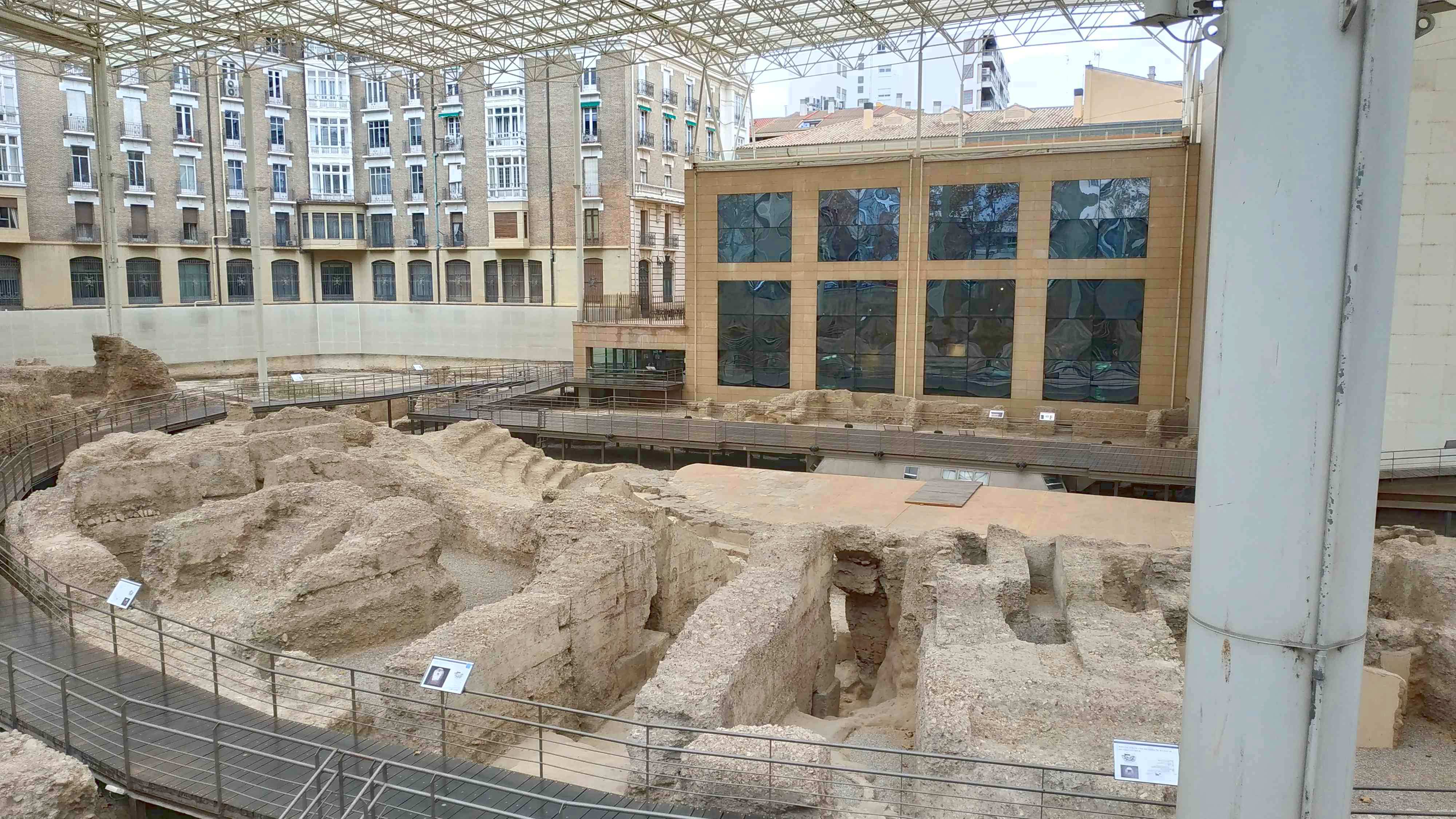
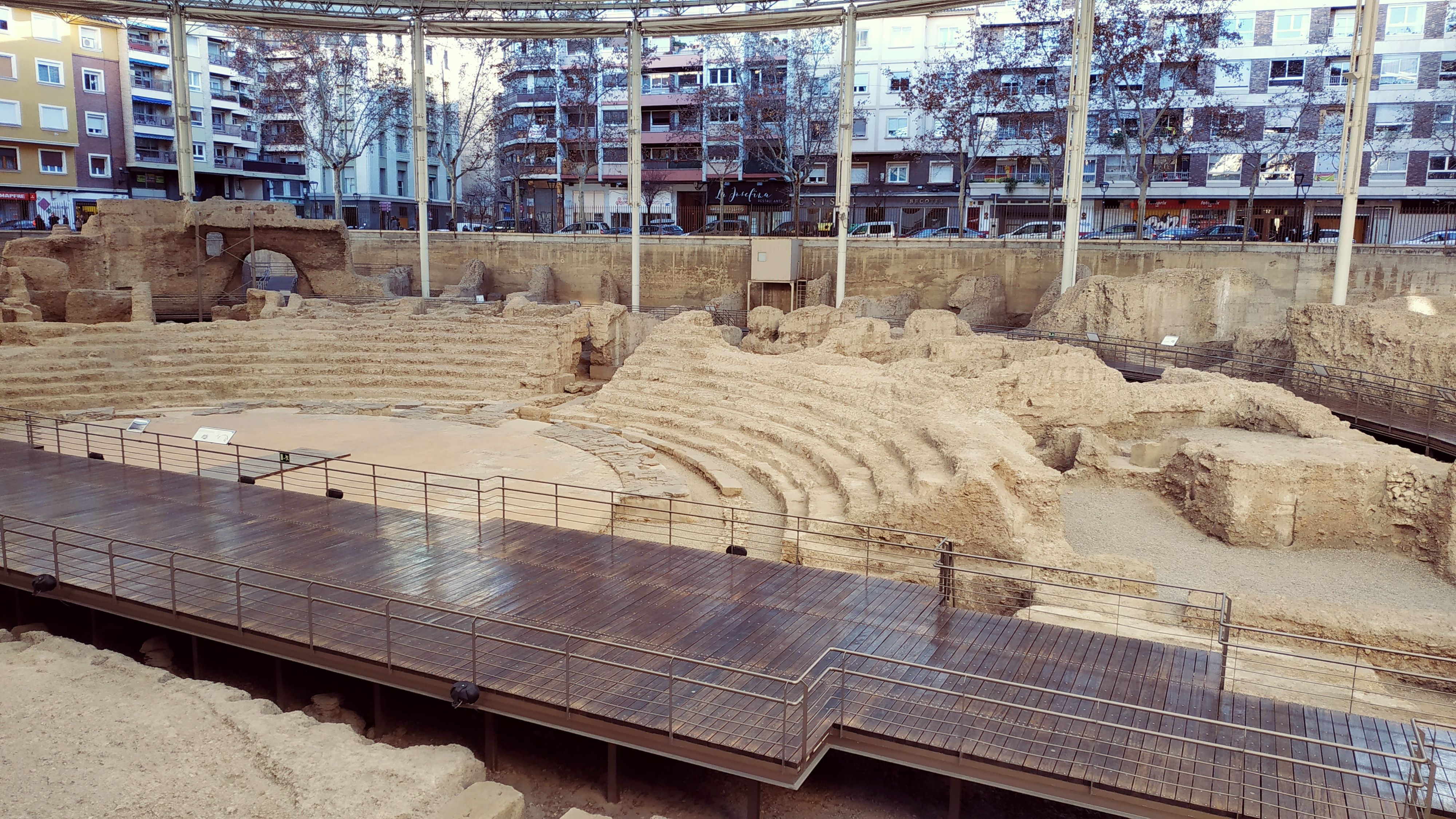
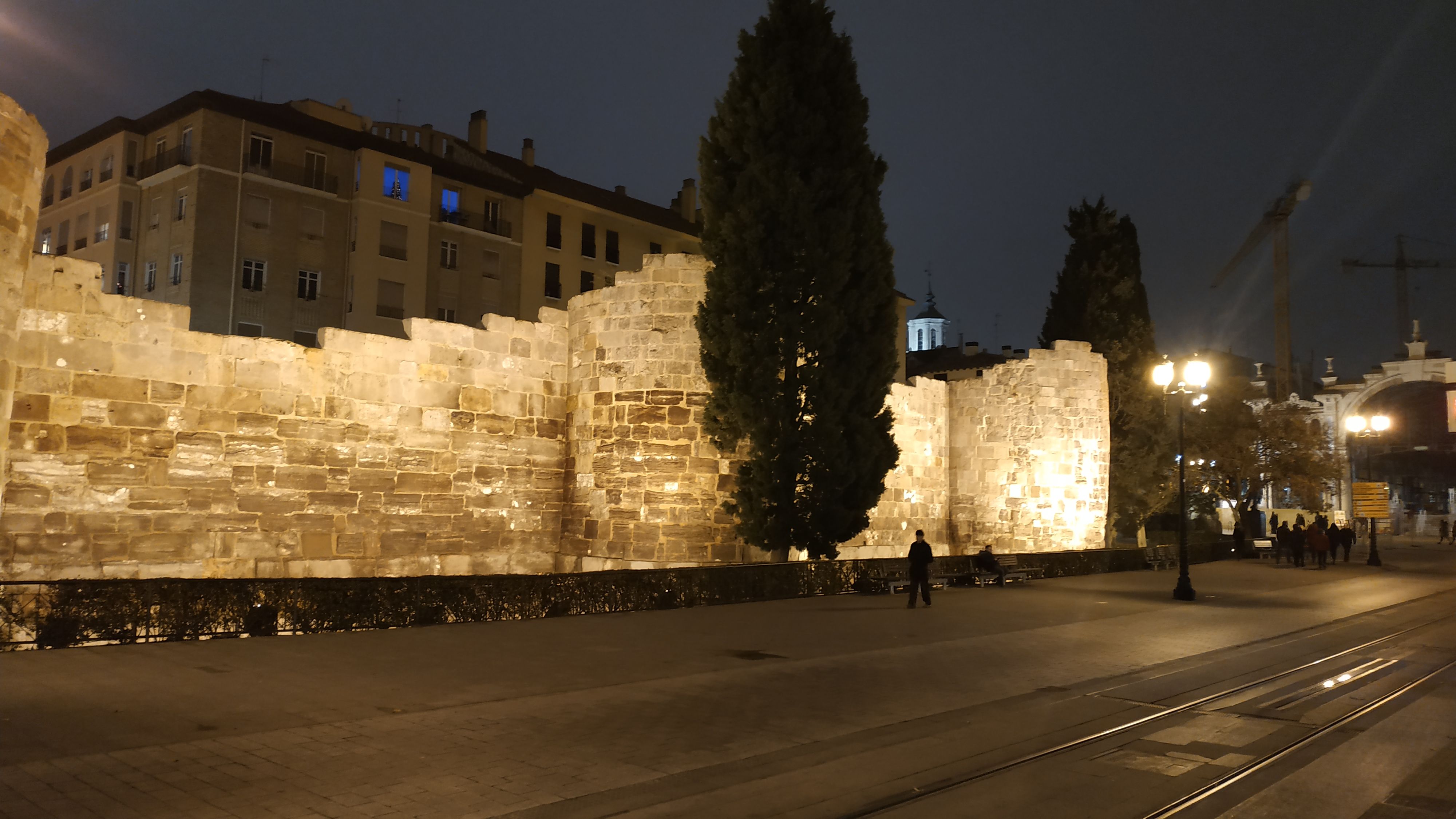
Aljafería Palace
The taifa of Saraqusta was an independent Muslim state of what is now eastern Spain, which was established in 1018 as one of the taifa kingdoms, which emerged in the 11th century following the destruction of the Cordoban Caliphate in Iberia. The Aljafería Palace is a fortified palace built during the second half of the 11th century. It was the residence of the Banu Hud dynasty during the era of Abu Jaffar Al-Muqtadir and reflecting the splendor attained by the kingdom of the taifa of Zaragoza at the height of its grandeur. The palace currently contains the Cortes (regional parliament) of the autonomous community of Aragon.
If there is a single monument that, on its own, is worth a trip to Zaragoza, it is the Aljafería Palace.
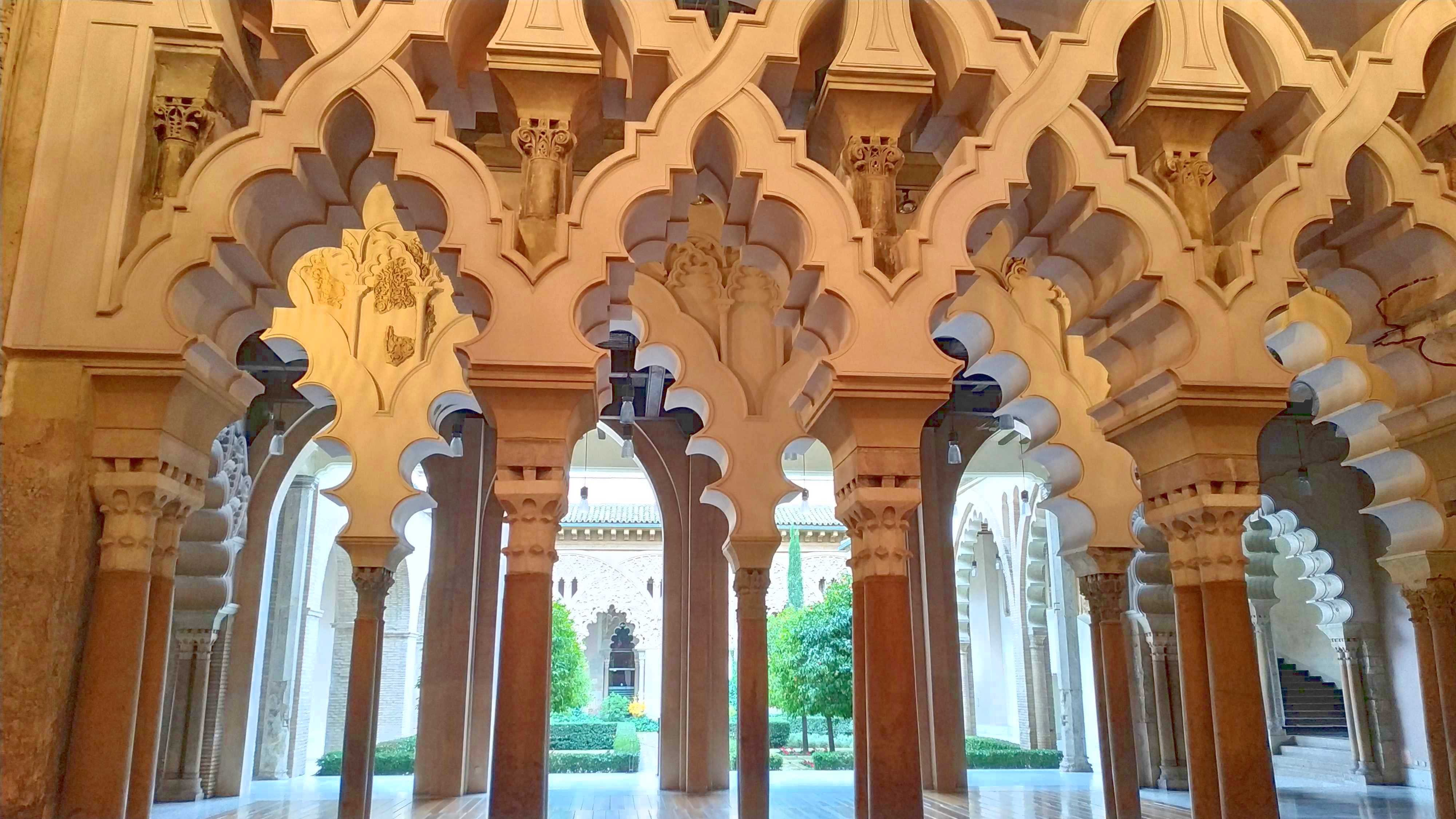

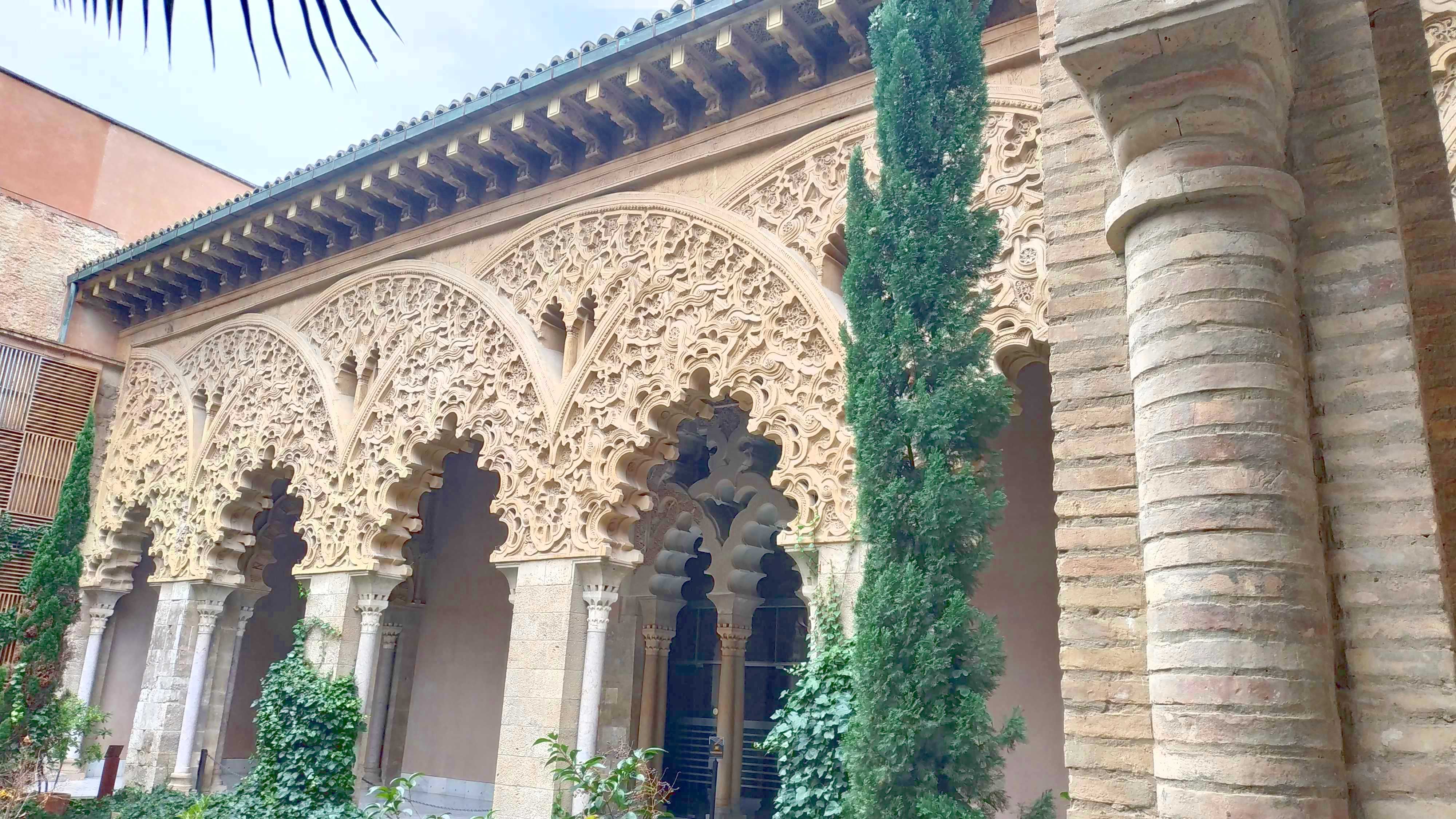
Mudéjar Architecture
In 1118, after the conquest of the city by the Christian king Alfonso I, -El Batallador-, Zaragoza became the capital of the kingdom of Aragon. Mudéjar is the name given to Muslims of Al-Andalus who remained in Christian territory after the Reconquista but were not converted to Christianity.
The Mudéjar style, a symbiosis of techniques and ways of understanding architecture resulting from Muslim and Christian cultures living side by side, emerged as an architectural style in the 12th century on the Iberian peninsula. It is characterised by the use of brick as the main material. Mudéjar did not involve the creation of new shapes or structures (unlike Gothic or Romanesque), but the reinterpretation of Western cultural styles through Islamic influences. It became most highly developed mainly in Aragon, especially in Teruel, but also in Zaragoza, Utebo, Tauste, Daroca, Calatayud, among others. The Mudéjar Architecture of Aragon is a UNESCO World Heritage Site.
In the city of Zaragoza, the most interesting mudejar monuments include the apse, parroquieta and dome visible in the north side of La Seo Cathedral, the mudejar part of the Aljafería Palace, and the splendid towers of San Pablo, Santa María Magdalena and San Gil churches. And guess what? Most of them can be enjoyed while going for tapas in the old city.
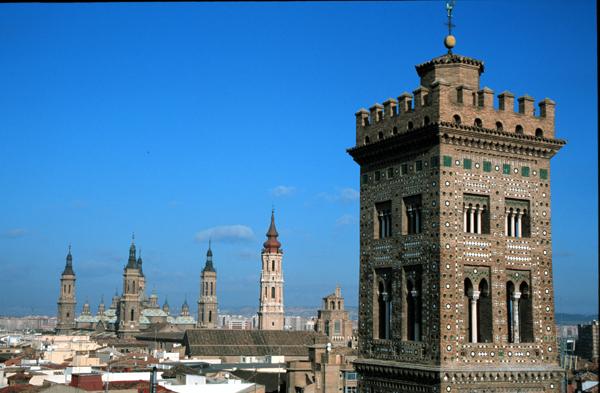
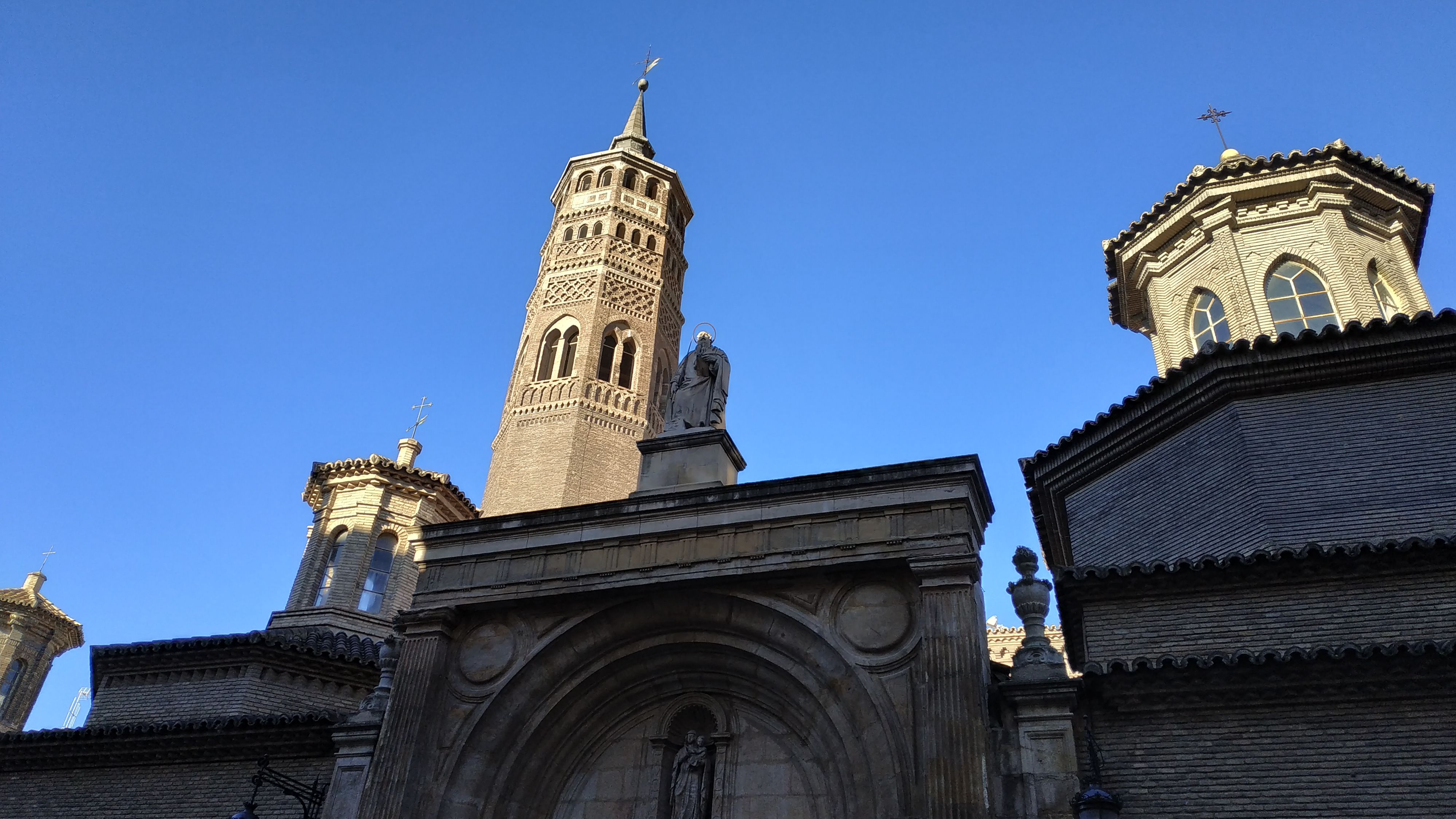
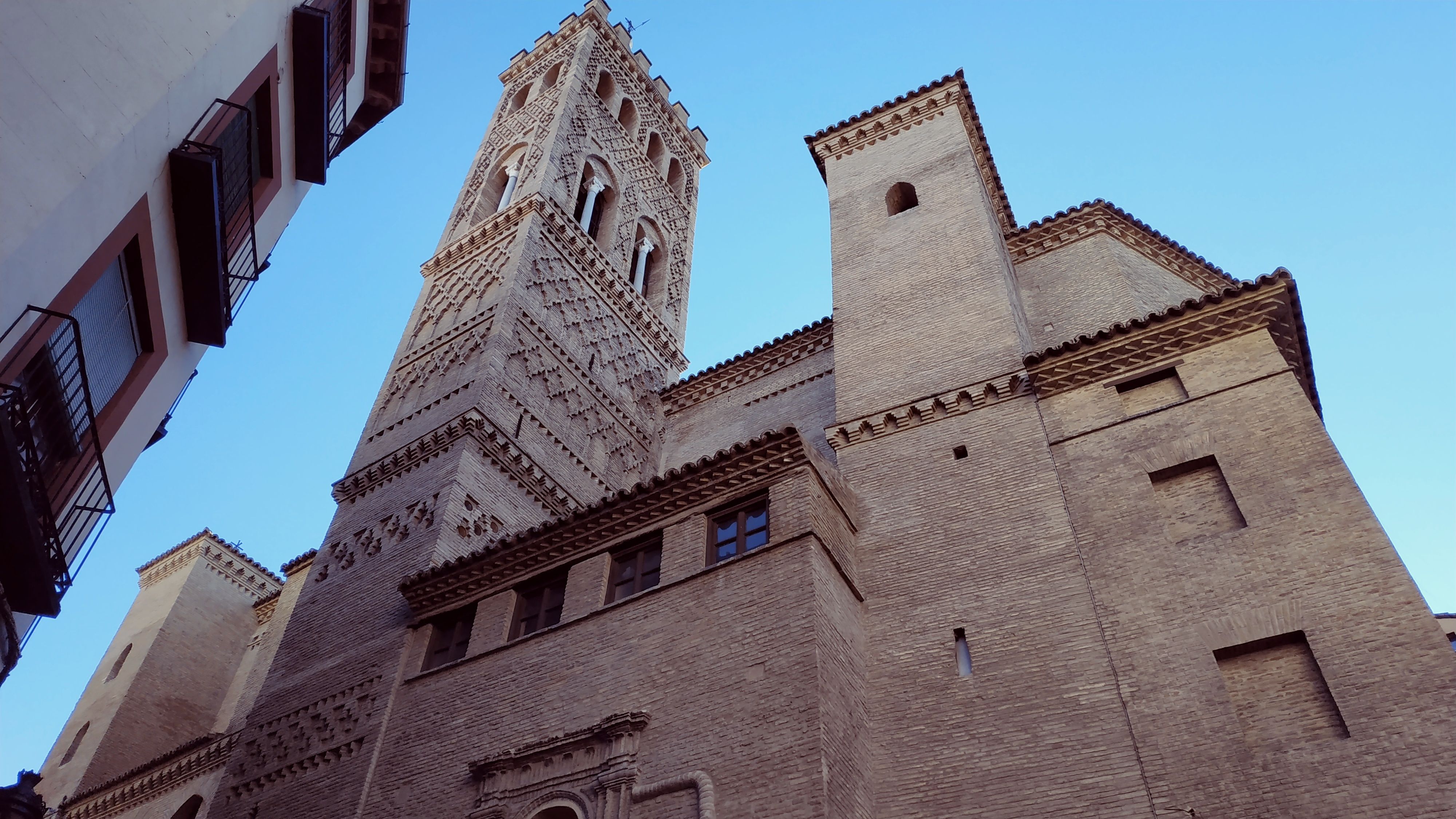
La Seo
La Catedral de El Salvador (Cathedral of the Savior) is commonly known as La Seo (Aragonese for “see”) to distinguish it from the nearby El Pilar. The two share co-cathedral status in metropolitan Zaragoza.
La Seo was built on the site of the ancient Roman forum of Augustus and of the main mosque of the Moorish city of Saraqusta, elements of whose minaret form part of the current tower. The construction began in the 12th century in the Romanesque style, and underwent many alterations and expansions until 1704, when the Baroque spire completed the tower. The cathedral is a mixture of styles, from the Romanesque apse (12th century) to the Baroque tower and Neo-Classical main door (18th century), passing through Mudéjar and Gothic. La Seo has also a Museum of Tapestries with an impressive collection of 14th to 17th century Flemish and French Tapestries.
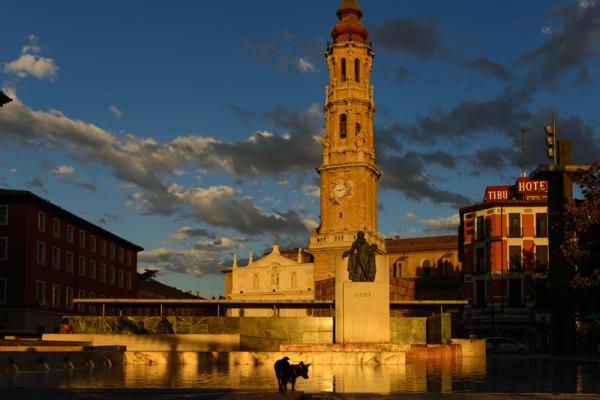
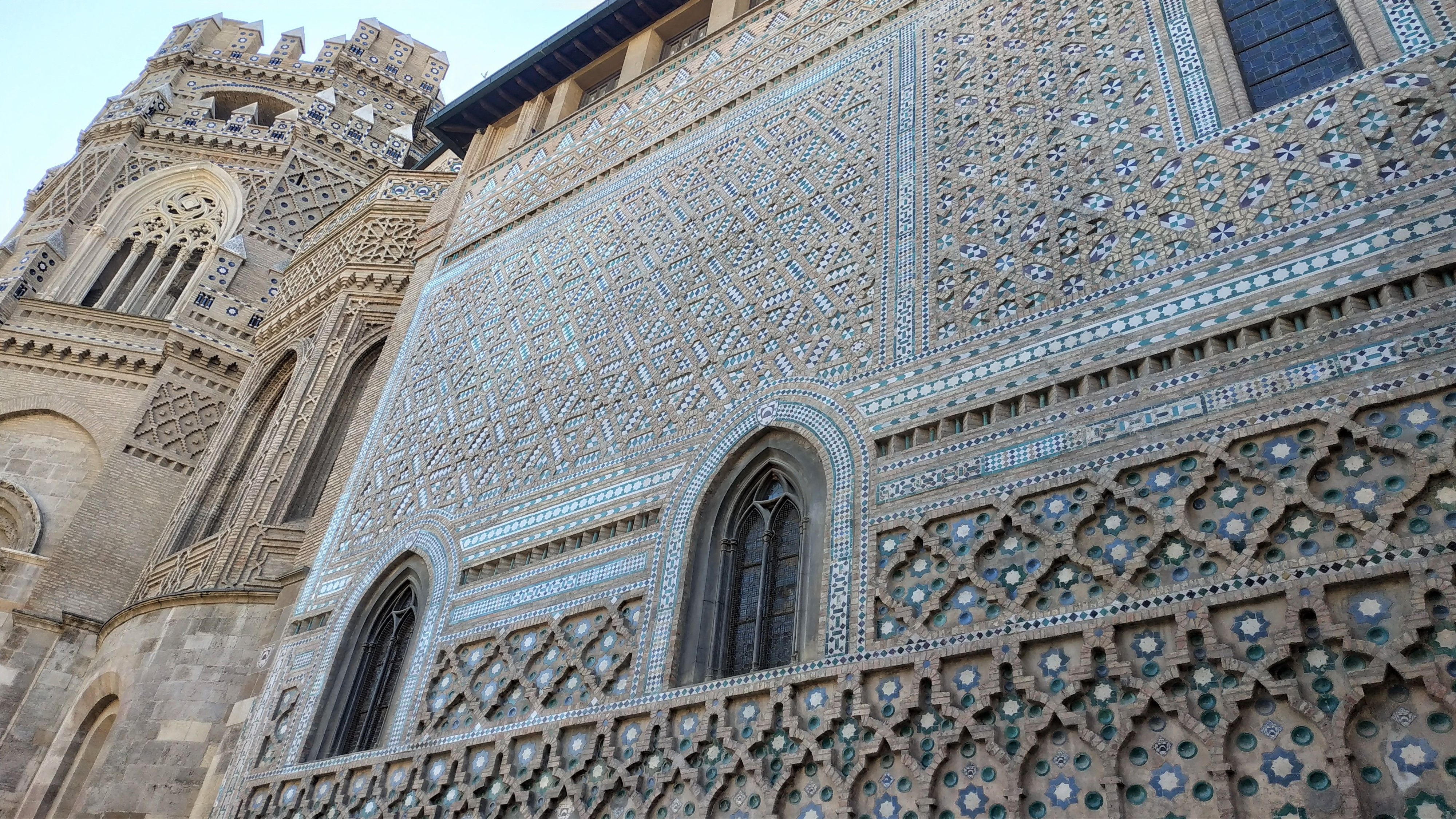
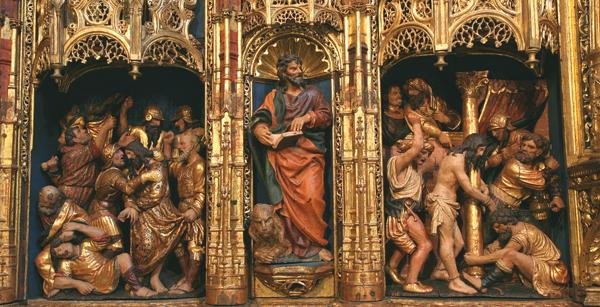
Basílica del Pilar
Christian tradition holds that on 2 January 40 AD, while St. James the Apostle was deep in prayer by the banks of the Ebro, the Virgin Mary appeared to him descending atop a marble pillar. About a year after the apparition James arranged to build a small chapel in Mary’s honor, which was repeatedly replaced by different style churches until the current baroque basilica, finished in year 1686. The legendary pillar is venerated by thousands of catholic pilgrims every year. The finest artworks are the gothic alabaster altarpiece sculpted by Damian Forment between 1509 and 1512, and the domes painted by Francisco Goya in 1772-1781.
From the Ebro river side you can gain access to the lift that climbs to the north tower for a superb view of the old city and the Ebro River.
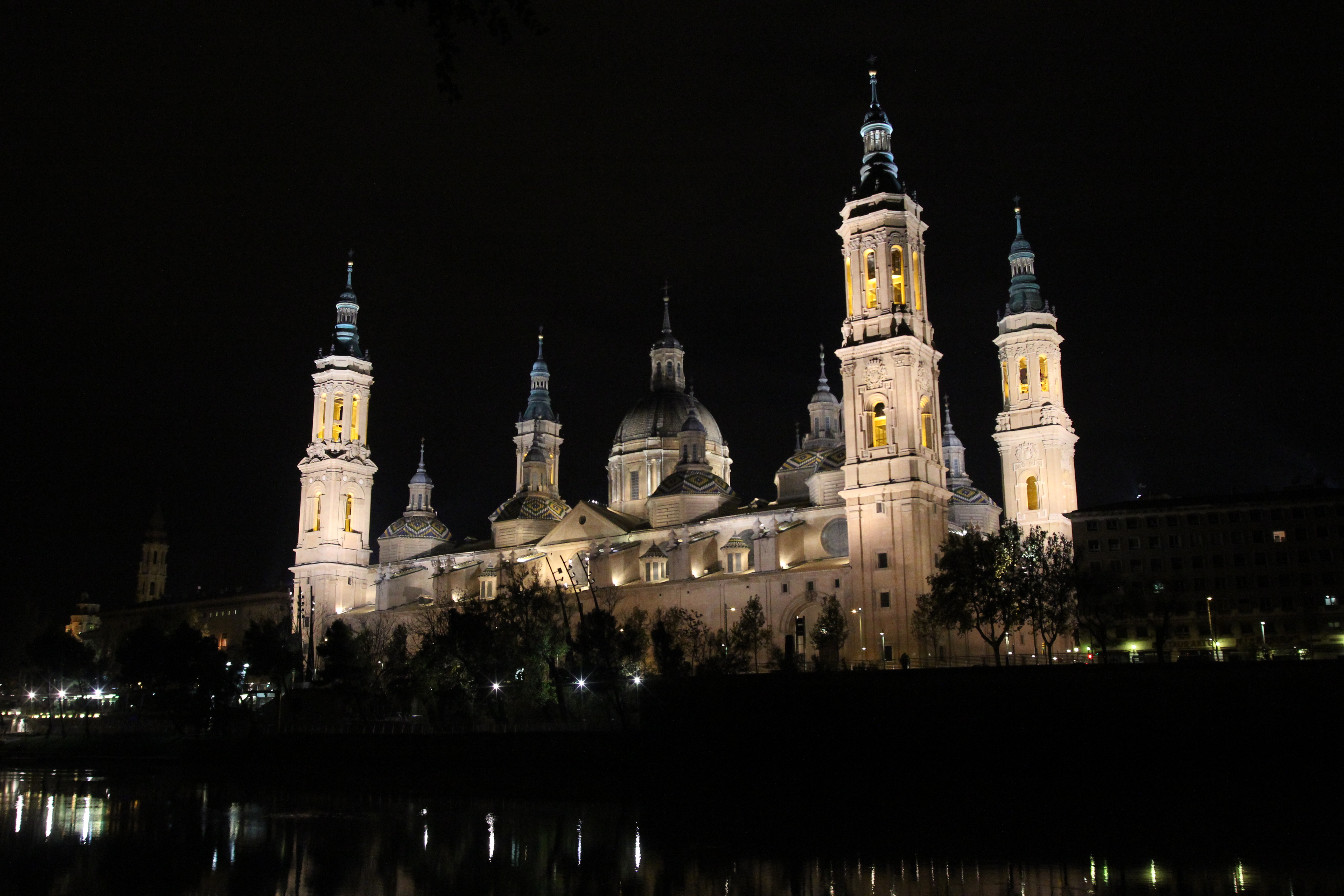
Basílica de Nuestra Señora del Pilar